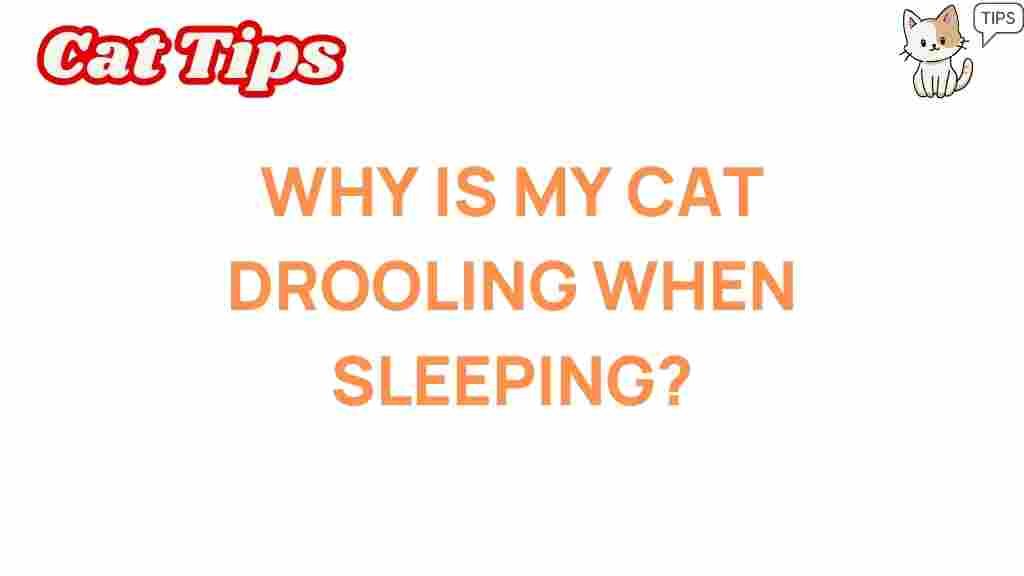Understanding Cat Drooling: Why Is My Cat Drooling in Sleep?
If you’ve ever walked into a room to find your feline friend peacefully dreaming, only to be surprised by a pool of drool forming beneath their chin, you may have wondered, “Why is my cat drooling in sleep?” While drooling is common in dogs, it can be somewhat of a mystery among cat owners. In this article, we will unravel this mystery by exploring the causes, implications, and what you can do if your cat is drooling.
What Does Cat Drooling Indicate?
Cat drooling, or hypersalivation, can stem from various reasons, ranging from benign to serious health issues. It’s essential to monitor your cat’s overall behavior and health to determine the cause of the drooling. Here are some common reasons why your cat might drool:
- Dental Issues: Cats can suffer from periodontal disease or dental infections, which may cause pain and excessive saliva production.
- Gastrointestinal Problems: Nausea or other digestive issues can lead to drooling as well.
- Stress or Anxiety: Just like humans, cats can experience stress that may manifest as drooling.
- Poisoning: If your cat has ingested toxic substances, drooling may be a symptom.
- Heatstroke: In extreme heat, cats may drool as their body attempts to cool itself.
Causes of Cat Drooling in Sleep
Understanding the specific triggers for cat drooling during sleep can help you determine if it’s a cause for concern. Here are some potential causes:
1. Relaxation and Dreaming
When cats are deeply relaxed or dreaming, their bodies can sometimes produce more saliva. This is usually harmless and temporary.
2. Dental Health
One of the most common reasons for cat drooling is poor dental health. If your cat has dental disease, it can lead to pain, which may cause them to drool, even in their sleep.
3. Nausea
If your cat is nauseous, it might drool in its sleep. Nausea can arise from various issues, including dietary changes, infections, or underlying medical conditions.
4. Toxins or Poisons
Exposure to toxins can lead to excessive drooling as the body tries to expel harmful substances. Check for any potential hazards in your home that your cat might have ingested.
5. Neurological Issues
Neurological problems can also lead to drooling. Conditions affecting the brain or nervous system may interfere with the cat’s ability to swallow normally.
Step-by-Step Process: What to Do If Your Cat Is Drooling
If you notice your cat drooling, especially if it’s a new occurrence, it’s crucial to take action. Here’s a step-by-step guide:
Step 1: Observe Your Cat
Take note of your cat’s behavior. Is the drooling persistent? Are there other symptoms, such as vomiting, lethargy, or changes in appetite? Documenting these behaviors can be helpful for your veterinarian.
Step 2: Check for Dental Problems
Look inside your cat’s mouth for signs of dental issues. Bad breath, swollen gums, or broken teeth can indicate dental disease. If you notice any of these symptoms, schedule a veterinary appointment.
Step 3: Monitor for Other Symptoms
Keep an eye out for any accompanying symptoms, such as:
- Loss of appetite
- Vomiting
- Weight loss
- Changes in behavior
Step 4: Evaluate Their Environment
Ensure that your cat has not accessed any toxic plants or substances that could cause drooling. If you suspect poisoning, contact your veterinarian immediately.
Step 5: Consult Your Veterinarian
If the drooling continues or if your cat shows any concerning symptoms, it’s time to take them to the vet. A professional can conduct a thorough examination and recommend appropriate treatment.
Troubleshooting Tips for Cat Drooling
Here are some troubleshooting tips if you find your cat drooling excessively:
- Maintain Dental Hygiene: Regularly brush your cat’s teeth and schedule professional dental cleanings to prevent dental disease.
- Minimize Stress: Create a calm environment for your cat. Provide plenty of hiding spots and safe spaces to help them feel secure.
- Monitor Diet: Ensure your cat is eating a balanced diet and avoid sudden changes that could upset their stomach.
- Stay Informed: Educate yourself about common pet poisons and keep harmful substances out of reach.
- Regular Vet Visits: Take your cat for regular check-ups to catch any potential health issues early.
When to Seek Immediate Veterinary Care
While some drooling can be harmless, there are situations where immediate veterinary care is necessary. Seek help if your cat exhibits any of the following:
- Excessive drooling that persists over several days
- Signs of distress or pain
- Difficulty swallowing or eating
- Vomiting or diarrhea
- Changes in behavior or lethargy
Conclusion
Understanding why your cat is drooling in sleep can help you identify potential health issues and address them promptly. While drooling can sometimes be a normal response to relaxation or dreaming, it could also indicate underlying medical concerns that require attention. By observing your cat’s behavior, maintaining their dental health, and ensuring a stress-free environment, you can help minimize instances of cat drooling. If you’re ever in doubt, don’t hesitate to reach out to your veterinarian for guidance.
For more information on cat care, check out our article on common feline health issues. If you suspect your cat has ingested something harmful, consult the ASPCA’s poison control for immediate advice.
This article is in the category Health and created by CatTips Team
